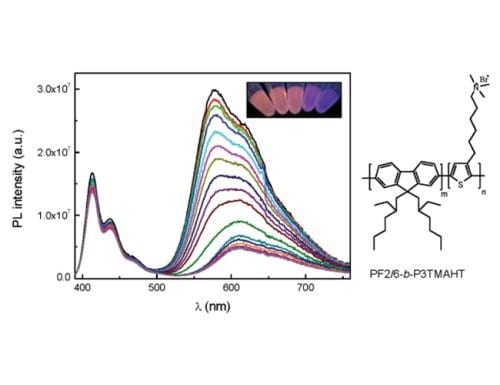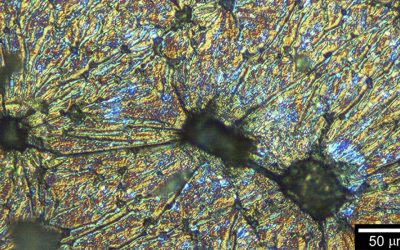 Many chemically and biologically interesting and relevant species carry a negative charge, and the development of sensitive methods for detection and quantification of such anions is an important challenge. Optical sensors based on positively charged light-emitting conjugated polymers show particularly high sensitivity for this, and a variety of sensors have been reported for chemical and biological systems based on such cationic conjugated polyelectrolytes. However, for quantitative applications, these require some appropriate reference system to correct for both instrumental and environmental variations.
Many chemically and biologically interesting and relevant species carry a negative charge, and the development of sensitive methods for detection and quantification of such anions is an important challenge. Optical sensors based on positively charged light-emitting conjugated polymers show particularly high sensitivity for this, and a variety of sensors have been reported for chemical and biological systems based on such cationic conjugated polyelectrolytes. However, for quantitative applications, these require some appropriate reference system to correct for both instrumental and environmental variations.
A cooperation of researchers from Coimbra (Portugal), Wuppertal (Germany), and Santa Barbara (USA) now show that such a reference can be built into a single polymer by combining two blocks, one consisting of a blue light-emitting uncharged polymer (polyfluorene) and the other a positively charged orange/red-emitting polymer (polythiophene). The intensity of light emitted by the cationic block is reduced in the presence of anions while that of the neutral segment is unchanged. The ratio of the emission intensities provides a sensitive (ratiometric) method for sensing and quantifying species such as DNA and environmentally relevant halide anions. Selectivity is seen in the latter case, with strongest effects being seen by iodide ions. The ratiometric system has potential for optical sensing and imaging of a wide range of negatively charged species of chemical and biological interest.

















